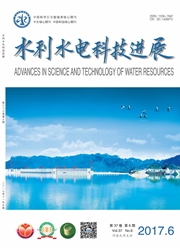

 中文摘要:
中文摘要:
Experimental and theoretical studies were carried out to investigate the coupled influence of flow velocity increment and particle size on the retention and release of particles in porous media. Particle release was examined through measurement of changes in effluent particle concentrations,and particle retention was assessed through measurement of the final spatial distribution of particles remaining in the soil columns after the experiments. Particle release curves were simulated using a convection-dispersion model that includes the instantaneous release of the line source. Fitted model parameters were used to gain insights into the mechanisms that control particle retention and release. When the flow velocity increment was 0.0435 cm/s, the peak concentration of particles decreased with increasing flow velocity until the latter approached a critical level, beyond which the particle concentration increased. Particle wedging and fouling were considered the primary mechanisms that controlled particle retention and release beyond the critical particle velocity. In experiments with large flow velocity increments, small particles exhibited lower particle mass fraction than large particles as particle wedging and fouling increased with particle size. The range of longitudinal dispersivity decreased with an increasing particle size and flow velocity increment. Moreover, the mean particle velocity increased with the mean interstitial fluid velocity. The mean particle velocity profile was highly sensitive to the particle size at low velocity increments. In general,particle release rates increased with both flow velocity and velocity increment. The mass of the released particles provides further evidence that particle wedging and fouling are the major factors that control particle release in sand columns.
 同期刊论文项目
同期刊论文项目
 同项目期刊论文
同项目期刊论文
 期刊信息
期刊信息
